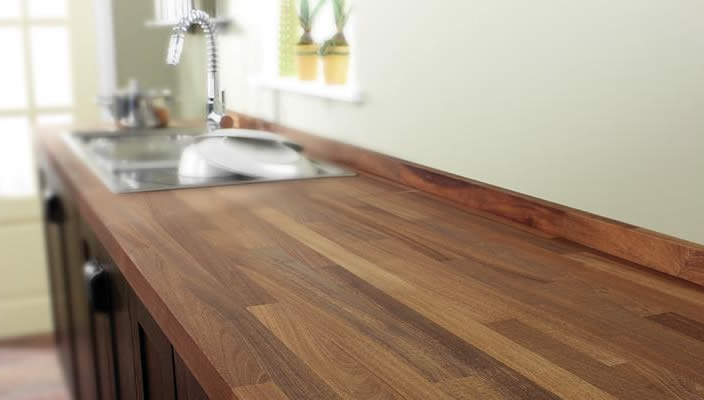How Much Does It Cost To Fit/Replace a Kitchen Worktop?

Cost to Fit/Replace a Kitchen Worktop
| job | Description | labour |
| 1 | To fit a traditional laminate work surface only, with no sink and just one edge strip to fix. One man will charge half a day’s labour. | £125 |
| Worktops which range from £70-£700 for a 3m length are not included | £?? | |
| 2 | If he has to fit your old sink back into it, then he will charge for the day | £210 |
| 3 | If you want three, new mitred corner, solid wood work surfaces, with the old sink and hob re fitted and then two coats of oil. Call this one man two days. | £400 |
| Legally with gas and electric hobs, a “qualified” person is required to re fit them: | £75 |
“Labour” at £175 a day (tradesman) £100 (labourer), includes incidental fixings etc. and tipping charges. “Materials” if mentioned, are larger things (a boiler) and stuff only you can choose (tiles etc). Also VAT must be added all round.
Information Sheet on Fitting/Replacing Kitchen Worktops
Granite, concrete and slate work surfaces are not available over the counter at the local “shed”. The company who makes them, fits them, so we can’t really give you labour charges. They are expensive of course!There is a plethora (I’ve always wanted to use that daft word) of work surfaces to choose from. Gone are the days when all you could get was a selection of horrid, marble effect, melamine covered chipboard either 30 or 40 mm thick with a rounded edge. Now there’s some very nice solid wood, “granite”, slate and even concrete ones to choose from.
The granite ones aren’t hewn from a cliff face half way up Helvelyn by the way, they’re made from granite bits, set in resin. One advantage of granite and concrete if your surfaces “go round a corner” is that there will be no joints. They are factory made in moulds and fitted as one (monstrously heavy) piece. The solid wood surfaces aren’t a slice of a tree either, they’re composite. You wouldn’t want a tree slice anyway, it would turn from a flat surface into a propeller in about a week, after your central heating got to it unless it was 10mm (4”) thick.
If you decide on a wooden surface, make sure it is well sealed with at least 2 coats of Danish oil (or similar) before you start using it. Depending on which “oil” you use, the first coat or coats, can be “thinned” with spirit, to ensure it gets right into the surface. The fitter should be able to recommend the most suitable type. Slate should be sealed as well but this very probably will be done in the factory.
If your wooden or traditional work surfaces do go around corners, make sure the fitter is creating a mitred, glued joint. He uses a template and then cuts both pieces with a router, not a saw. He then removes three special shapes underneath and fits brackets to pull both lengths together, after first sealing the edge surfaces. I can’t imagine any fitter today using the old-fashioned metal jointing strip but just make sure you haven’t engaged a jointing dinosaur.
Also if you are having laminate work surfaces fitted, it’s likely that separate strips (which should come with the new surface), will have to be glued to an exposed edge or two when it’s all finished. Make sure he is used to doing this, it’s not difficult to make a right pig’s ear of it.
FAQs 'traffic light' guide
-
What's easy about this job…
Open or CloseIt's precise, fiddly work.
-
What's tricky about this job…
Open or CloseGetting perfect mitres.
-
Potential problems with regards to this job…
Open or CloseNone that will affect price.
www.buildingsheriff.com
Copyright The Building Sheriff Ltd 2017